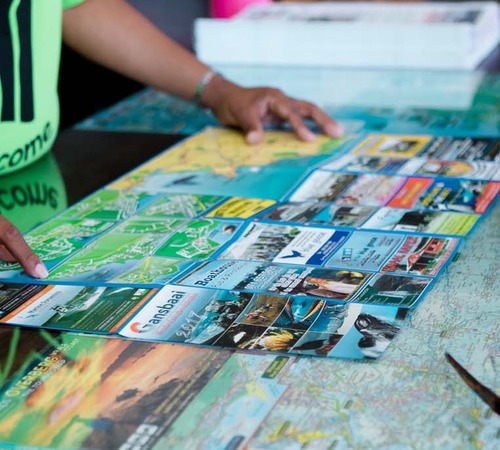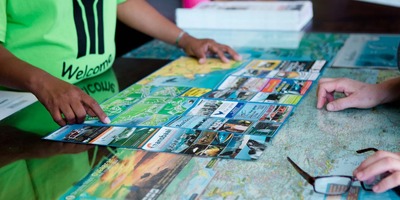Select a category
History of Betty's Bay
Today Betty's Bay is a small coastal village just outside of Cape Town that is renowned amongst holiday-makers for its tranquil pace. However, the village's past was not quite as serene. The history of Betty's Bay involved tales of Koisan strandlopers, bandits in hiding and whalers taking advantage of the 50 tonnes maritime visitors.
The area from Cape Hangklip to Hawston boasts significant archeological sites where stone hand-axes dating back 20 000 years to the Neanderthal era have been discovered. Khoisan strandlopers also left behind traces from Kleinmond to Hawston. The rolling Kogelberg Mountains served as a barrier between this strip along the ocean and the rest of the Western Cape so it was mostly shielded from colonisation for quite some time.

Due to its isolated nature, it became a popular retreat for outlaws and the remnants of the Khoisan tribes. The Khoisan tribes had depleted in numbers due to measles but the population gradually grew in the area and runaway slaves and criminals also began to call the area home.
The area was mostly uninhabited and, according to William Paterson who trekked from Somerset West to Botrivier, was occupied by a lot of wildlife. Hyena, zebra, bontebok, buffalo and eland roamed freely in the fynbos belt between ocean and mountain.
A significant part of the history of Betty's Bay came in 1913 when the whaling station at Stony Point was established. Frank Cook initiated the project and started off by leasing approximately 24 hectares of land from the Walsh brothers. In the 17 years that the whaling station was operating, two whaling boats hunted the whales off the coast of the Hangklip-Kleinmond area. The whale of choice was mostly the Southern Right Whales because they are one of the easiest whales to hunt and catch, a fact that lent them their name as they were the “right” whale to hunt. They were easier to catch compared to other whales because they venture close to the shore, they are naturally inquisitive so they often swim up to boats and they float when they are killed.

In the first year of whaling they caught 179 whales but in later years they would catch up to 300 whales in a season. The whaling industry was however not without its problems. The company was liquidated in 1915 and only opened its doors again in 1925. However, by 1930 the price of whale oil had dropped so substantially that the station had to close down. Today the foundations of the main buildings, the blubber tanks, the rail lines, the original slipway and the two houses that belonged to the managers are the only remains of the old whaling station.
The large piece of land that belonged to John Walsh held a small fishing enterprise that sent fish to Kalk Bay and the rest of the land was used for grazing and collecting wild flowers. Back then Everlastings were popular for stuffing mattresses with and often used for wreaths. After John passed away the land was sold to three business partners - Arthur Youldon, Jack Clarence and Harold Porter. Together they established Rooi Els, Pringle Bay and Betty's Bay. Betty's Bay was named after Arthur's daughter Betty, the main road running through the town was named after Clarence and Harold Porter laid out the current Botanical Gardens and street plans in the 1930s.

This was the beginning of a cosy seaside town. The area first became a popular holiday spot in the 1860s with farmers from Caledon and the surrounding area trekking to the coastal town for some relaxation. Today it is still a popular holiday spot especially amongst Capetonians. Rich with history and natural gems, Betty's Bay is a wonder to behold.
























